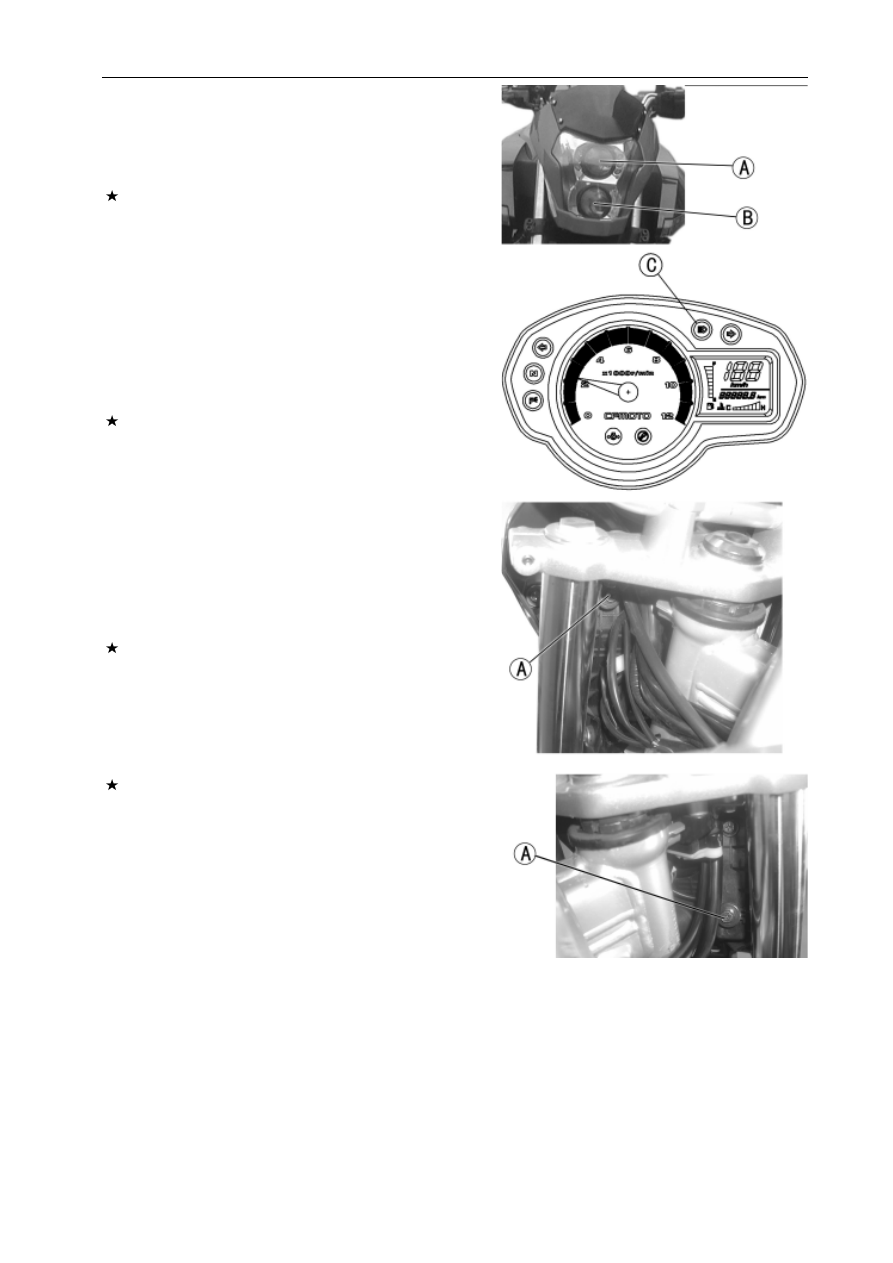CFMoto motorcycle CF650NK. Service Manual - part 12

PERIODIC MAINTENANCE 2-39
Set the dimmer switch to high beam position.
The low beam [A] and high beam [B] headlights should
go on.
The high beam indicator light (LED) [C] should go on.
If the high beam headlight and/or high beam indicator
light (LED) does not go on, inspect or replace the
following item.
Headlight High Beam Bulb (see Headlight Bulb Replace-
ment in the Electrical System chapter)
Dimmer Switch (see Switch Inspection in the Electrical
System chapter)
Turn off the engine stop switch.
The low beam and high beam headlights should stay
going on.
If the headlights and high beam indicator light (LED)
does go off, inspect or replace the following item.
Headlight Relay in Relay Box (see Relay Circuit Inspec-
tion in the Electrical System chapter)
Turn off the ignition switch.
The headlights and high beam indicator light (LED)
should go off.
Headlight Aiming Inspection
Inspect the headlight beam for aiming.
If the headlight beam points to one side rather than
straight ahead, adjust the horizontal beam.
Headlight Beam Horizontal Adjustment
Turn the horizontal adjuster [A] on the headlight with the
screwdriver in or out until the beam points straight ahead.
If the headlight beam points too low or high, adjust the
vertical beam.
Headlight Beam Vertical Adjustment
Turn the vertical adjuster [A] on the headlight with the
screwdriver in or out to adjust the headlight vertically.